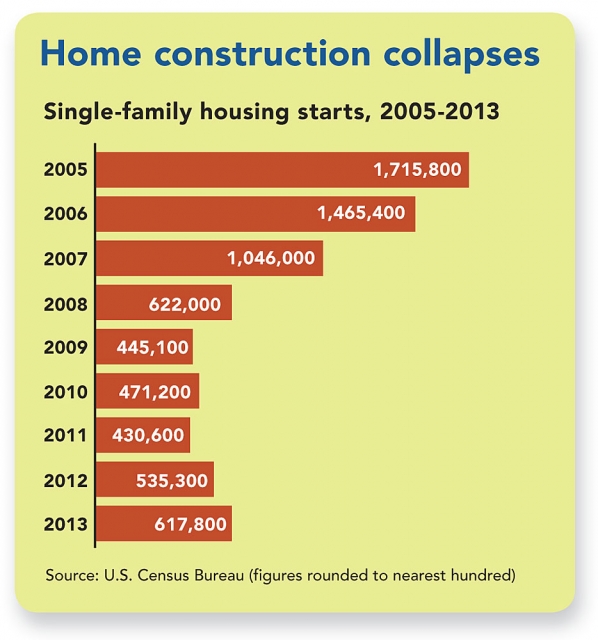
Image Credit: Photo: Peter Kuhnlein
Tens of thousands of homebuilders in this country went out of business during the recession, as new-home starts contracted by 75%. One of the biggest sectors of the American economy was devastated.
Against this backdrop of corporate carnage and financial distress, builders searched desperately for a market niche—a new type of home, a better location, or a new mode of operation—that might ensure their survival. Innovative new homes got smaller, and they also got greener and more energy efficient. Builders went beyond the superficial “greenscaping” of the previous decade, when about the most they would do is install compact-fluorescent light fixtures or carpets made with recycled soda bottles. In many cases, they reassessed all the products they were using to build houses, deleting ones that weren’t absolutely necessary and adding substitutes that performed better and lasted longer. Most important, some builders reexamined the engineering and the systems they used to build homes. They completely overhauled the inner workings of the houses they built and, in a huge break from tradition, called greater attention to the way the houses were built rather than to things like antiqued cabinets or built-in wine chillers.
Looking under the hood—and in the walls
One of the most exciting examples is the deconstructed model home done by Meritage Homes, the tenth-largest homebuilder in America. Meritage, which builds throughout the West and Southwest, began inviting potential buyers to look under the hood, so to speak—to see into the floor, ceiling, and walls. While half of their displays may be tricked out like the typical model home—with draperies, stainless-steel appliances, and tile floors—the other half look like they belong in a building-science museum. The idea is not only to lay bare superior construction practices but also to get people…
Weekly Newsletter
Get building science and energy efficiency advice, plus special offers, in your inbox.

This article is only available to GBA Prime Members
Sign up for a free trial and get instant access to this article as well as GBA’s complete library of premium articles and construction details.
Start Free TrialAlready a member? Log in
















0 Comments
Log in or become a member to post a comment.
Sign up Log in